
Some dogs will never enjoy being in the car and it is very important that we accept this. If your dog is one please do not force them to deal with the car and only travel them if absolutely necessary.
There are a couple of methods you can use. Some dogs will take to the car via one, others another. We have managed to gain the permission of an adopter that was struggling getting their dog used to the car and use their video which involves 'free-work' around the car to desensitise them to it.
Desensitisation:
Take each step slowly and be prepared to take a while - weeks or even a month or so moving from one step to another - you have got it do it at your dog's pace.
Keep training sessions short, about 15mins max.
- Start off with your dog on-lead at the front door or a distance away from the car and give them yummy treats for looking at the car
- Take steps toward the car, rewarding the dog for getting closer
- Walk around the car, allow your dog to sniff if they want to - remember to reward for any interaction except barking at the car. If they do take steps back as they have become overwhelmed
- You can at this point have the engine running if you like whilst walking and treating the dog around the car. Obviously, do not do this in a closed garage or keep the dog near the exhaust whilst the engine is running.
- Open the car door and walk you dog over to it, keep the line loose, allow the dog to sniff around, remembering to praise and reward.
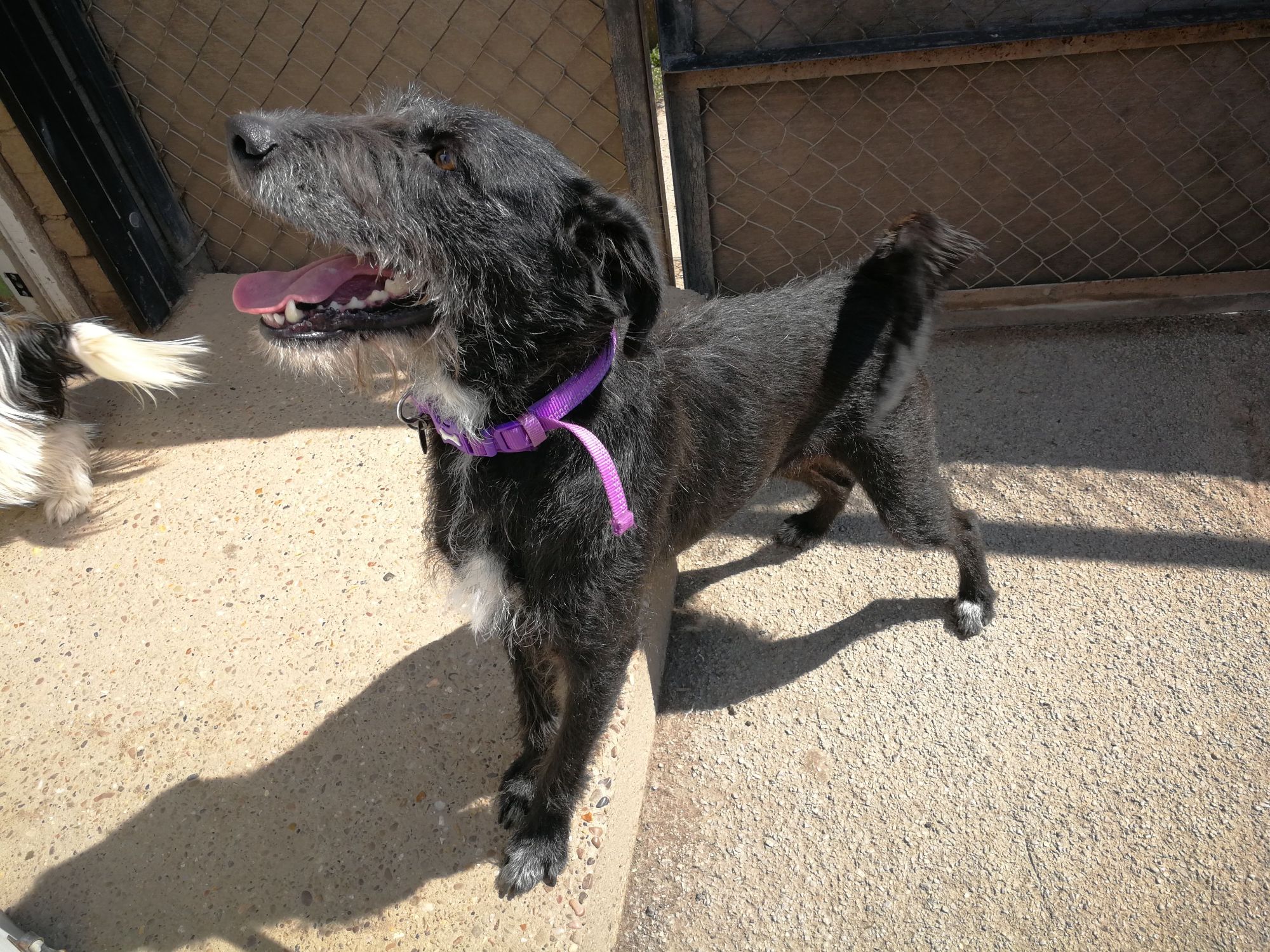
- You can place treats on the car seat or boot, depending on where you want your dog to travel in future, some dogs may put their paws up to reach in. Start with the treats close to the edge and gradually move them further into the car.
- Some dogs may be happy to jump in on their own, some may be happy to use a step or ramp. Most dogs will need picking up to place them into the car. If your dog is not happy being handled this way you will need to look for another option.
- Gently lift the dog into the car and say "car", do not restrain them. If they want to jump straight out allow them and reward them. If they want to have a sniff around allow them, give lots of praise and rewards - the car needs to be seen as a positive place to be. This step is going to need repeating until the dog is happy going in and out of the car and begins to settle.
- Once comfortable you can sit in the car with them, again keeping up with the rewards.
Now that your dog is comfortable around the car you need to look at ensuring your dog is safe in the car with you.
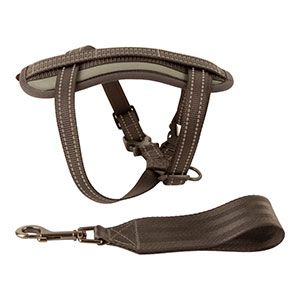
Car harness and seatbelt attachment:
Your regular harness is not suitable for car rides. You need a harness that is specially designed for the car. They will have a breast-plate to protect the dog and will have been tested in crash tests. A seatbelt attachment will either allow you to thread the seatbelt through or plug into the seatbelt clip.
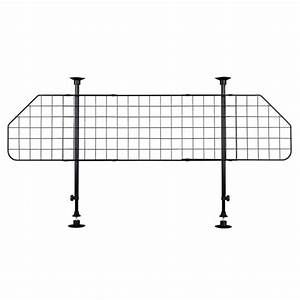
Boot guard:
If your dog is travelling in the boot of the car a dog boot guard is recommended to prevent them trying to climb over the seats. You will also need to tether the dog either via the seatbelt attachment threded through to the back or the attachment clipped to the tethering point in your car.
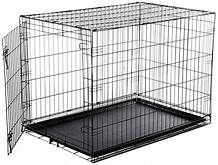
Crate:
If your dog is nervous you can travel them inside their crate. A metal crate is safer as material car crates are flimsy and the dog could escape if they are stressed out. Place a blanket over the top to make it darker and less stressful for the dog.
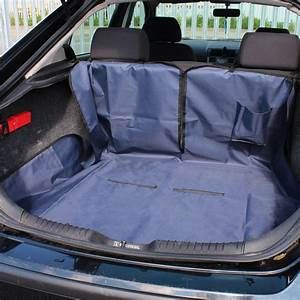
Dog seat cover/liner or hammock:
These are not essential, but could be useful for people whose dogs get car sick, urinate or deficate when driving. They also save your seats from muddy paws too. An old towel/blanket or sheet will also do the same thing but they are not waterproof.
Remember: The Highway Code – rule 57 of The Highway Code states that dogs and other animals travelling in your car need to be suitably restrained at all times and cannot access the driver. They mention how seat belt harnesses, pet carriers, dog cages or dog guards are all suitable safety measures. By not complying with these guidelines, you could risk being pulled over by the police and facing a large fine. Should you be in an accident and there is no evidence you restrained your pet, your insurance may also be void.
Remember: NEVER attach the seatbelt attachment or tether to the dog's collar. If you were to break harshly and your dog is thrown around in the car as you brake your dog's neck can be broken. It is important that you purchase a good quality car harness that spreads the impact across the body, not just in one specific area.
Tip: Use the boot or backseat for the dog so that they are not distracting you whilst you drive.
- Once your dog is settling in the car you can begin putting the car harness on the dog and plugging them into the seat so they are restrained, practice this until they have accepted it
- You can now begin to turn the engine on for a few seconds, treat the dog and turn it off again. Gradually build this up so the dog gets used to the noise and vibration of the car
- Try a very short drive in the car. Up the street and back only. If your dog is very stressed go back a step, you may need to just get them used to the car moving - you can reverse a bit on the drive or street and go forward back into position a few times until they are happy with this motion.
- Do not go from 5 minutes to 20 minutes in one go - you need to very gradually increase your drives so the dog can have a break and build up tolerance.
- You can take them to a secure field or go on a walk so that they see the car bringing them positive experiences.
If you have difficulty with the above steps you can try Clio's training techniques below.
Clio's video
Clio, a Rommie adopted via International Dog Rescue was having some issues with the car and so her parents sought the help of a trainer that introduced them to free-work to help her become desensitised to the car.
Free-work involves giving the dog things to do around the car so that the dog takes their mind off of the scary object. It can be used for many things, not just car desensitisation.
This video shows what Clio's family have been doing to hep her to cope being in and around the car.
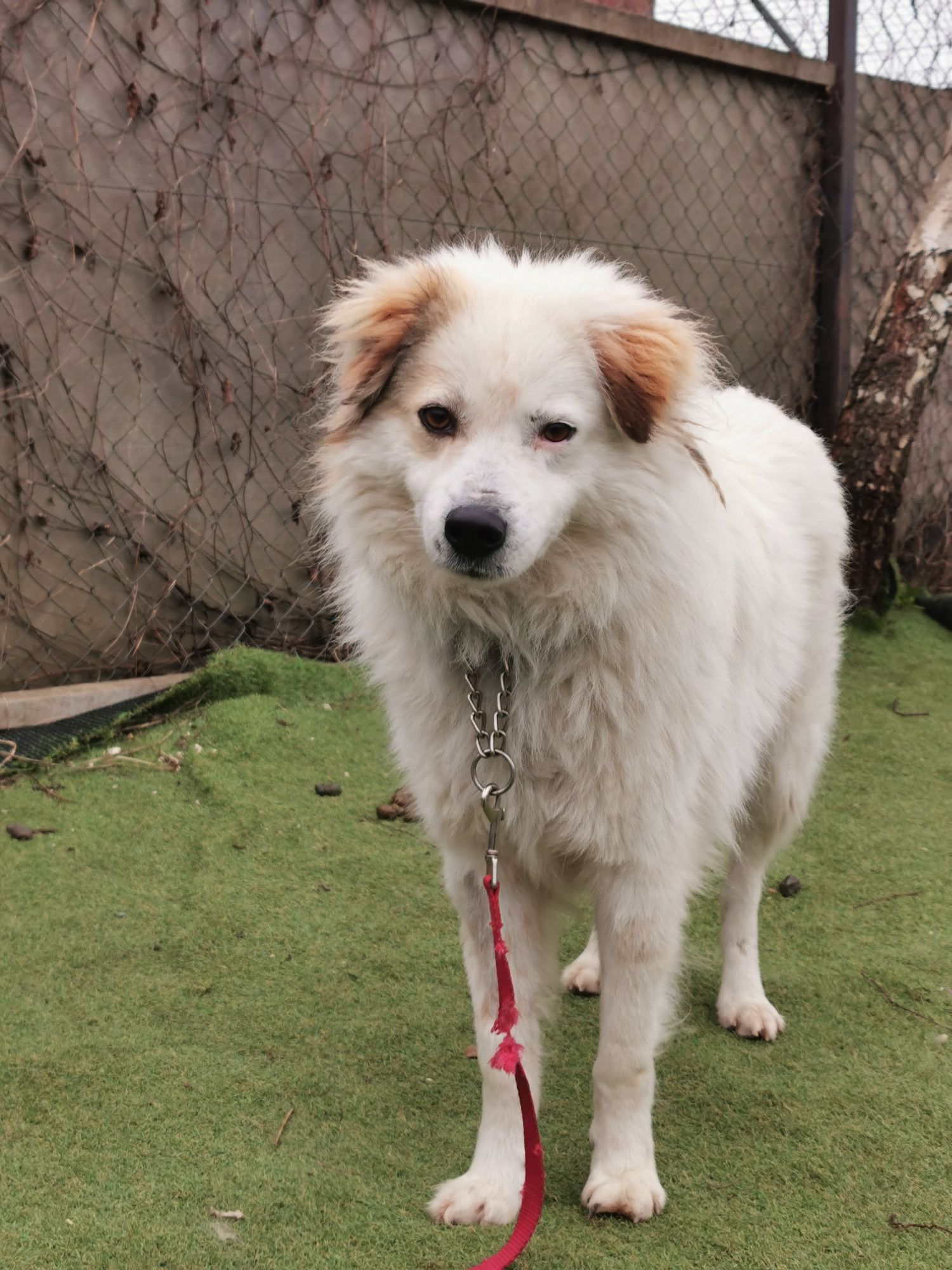
Let's talk car sickness...
Before the journey - Stress can play a large part in travel sickness. Dogs quickly learn that car journeys are uncomfortable, so they may start to show signs of anxiety as soon as they realise that they are about to go in the car. Some may even vomit before the car is started or before they get into it.
During the journey - One or more of the following signs suggest that your pet may be feeling ill when travelling:
- Hypersalivation (excessive drooling)
- Panting, swallowing, lip-licking
- Restlessness, anxiety, trembling
- Retching
- Vomiting
The signs of travel sickness vary from dog to dog. For example, some may simply vomit without showing any other signs. If your dog exhibits one or more of the above signs whenever travelling with you, then it’s possible your dog is suffering from travel sickness.
What causes travel sickness?
Dog motion sickness is more commonly seen in puppies and young dogs than in older dogs, just as carsickness afflicts more children than adults. The reason for this is because the ear structures used for balance aren’t fully developed in puppies. This isn’t to say that all dogs will outgrow travel sickness, though many will.
If the first few car rides of your dog’s life left him nauseated, he may have been conditioned to equate travel with vomiting, even after his ears have fully matured. Stress can also add to travel sickness, so if your dog has only ever ridden in the car to go to the vet, he may literally worry himself sick on the road.
The exact mechanisms which cause travel sickness are not fully understood. What we do know is that a combination of stress or anxiety can produce very strong feelings of nausea and cause vomiting.
Humans and dogs manage to balance thanks to a clever mechanism contained in the inner ear which sends signals to the brain. The movement caused by being in a car or at sea stimulates this mechanism which then bombards the brain with signals. These signals can be made worse by stress (perhaps caused by previous bad experiences) and stimulate areas of the brain which cause nausea and then vomiting.
Only when the movement stops will the nausea slowly subside as the brain activity returns to normal.
Travel sickness drugs work by blocking the signals in the brain which cause vomiting. Some of these also cause temporary drowsiness or sedation because of their effects on other parts of the brain. However, not all travel sickness pills have these effects – ask at your vet surgery for more information on different treatments.
In the past there were few ways to treat motion sickness medically and vets would dispense a sedative on most occasions. This may have been a good quick fix, but the result was a sleepy dog at the end of the journey. On a practical level this is not ideal either as your dog cannot go for a walk, or do anything other than ‘sleep it off’ when you get to your destination. So much for fun in the sun!
A non-sedating medication is only available by prescription from a vet and comes in tablet form. The appropriate dose is given from one hour or even up to 10 hours before travel, so can be given the night before, if you intend to leave early in the morning. It acts on the emetic centre in the brain to prevent vomiting and has no sedative effect at all. As the medication prevents the dog from being sick or feeling sick, the journey becomes much less stressful.
During future journeys you could expect the stress level to go down even further because there is no longer that anticipation of feeling sick based on previous experiences. These medications should be used in conjunction with behaviour training as very few work alone in the long term.
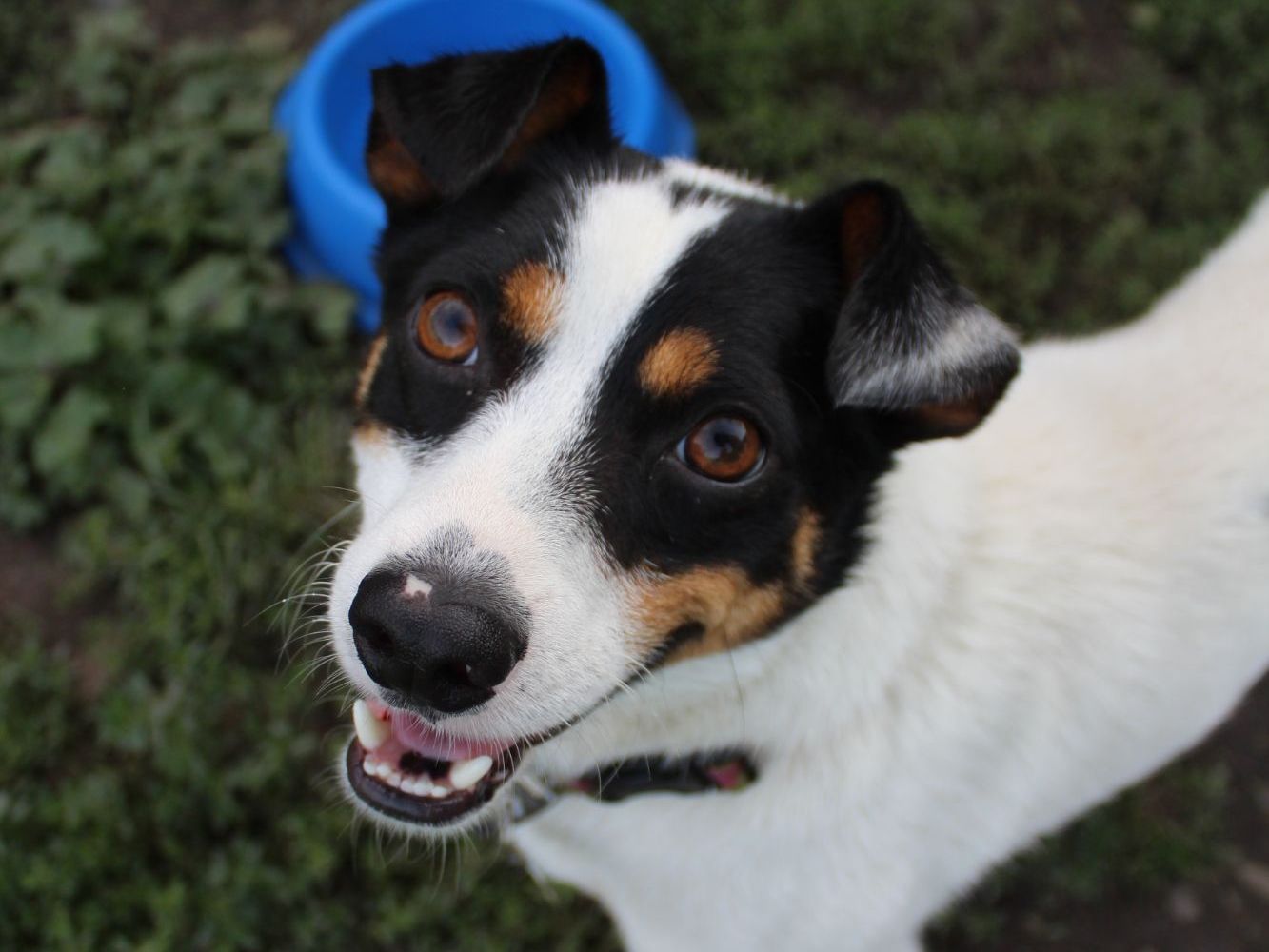
Other things you can do to help:
The best way to prevent dog travel sickness is to make the car ride as comfortable as possible for your dog.
Your dog will experience fewer nauseating visual cues if he faces forward while you’re traveling, rather than looking out the side windows. One way to guarantee this is by using a specially designed dog seat belt. Even though you can’t be sure your dog will face forward while riding in a travel crate, many people prefer to use crates for safety - and they do have the added benefit of containing vomit, should your dog become ill.
Another thing that may help your dog’s motion sickness is to lower your car windows a couple of inches while the car is moving. This helps balance the air pressure inside the car with the air pressure outside, which may help reduce your dog’s nausea and discomfort. Also, be sure to keep the car cool and well ventilated, as a hot or stuffy vehicle can contribute to unpleasant sensations for your dog.
One trick to prevent dog motion sickness is to limit your dog’s food consumption prior to travel. Then, right before the trip, give your dog a small piece of sugary candy (like a jellybean), which seems to reduce sensations of nausea. Never give your dog chocolate, however, because it is toxic to dogs.
Remember: You must never leave your dog in a car on a warm or hot day. The temperature in the car increases rapidly and can be fatal.